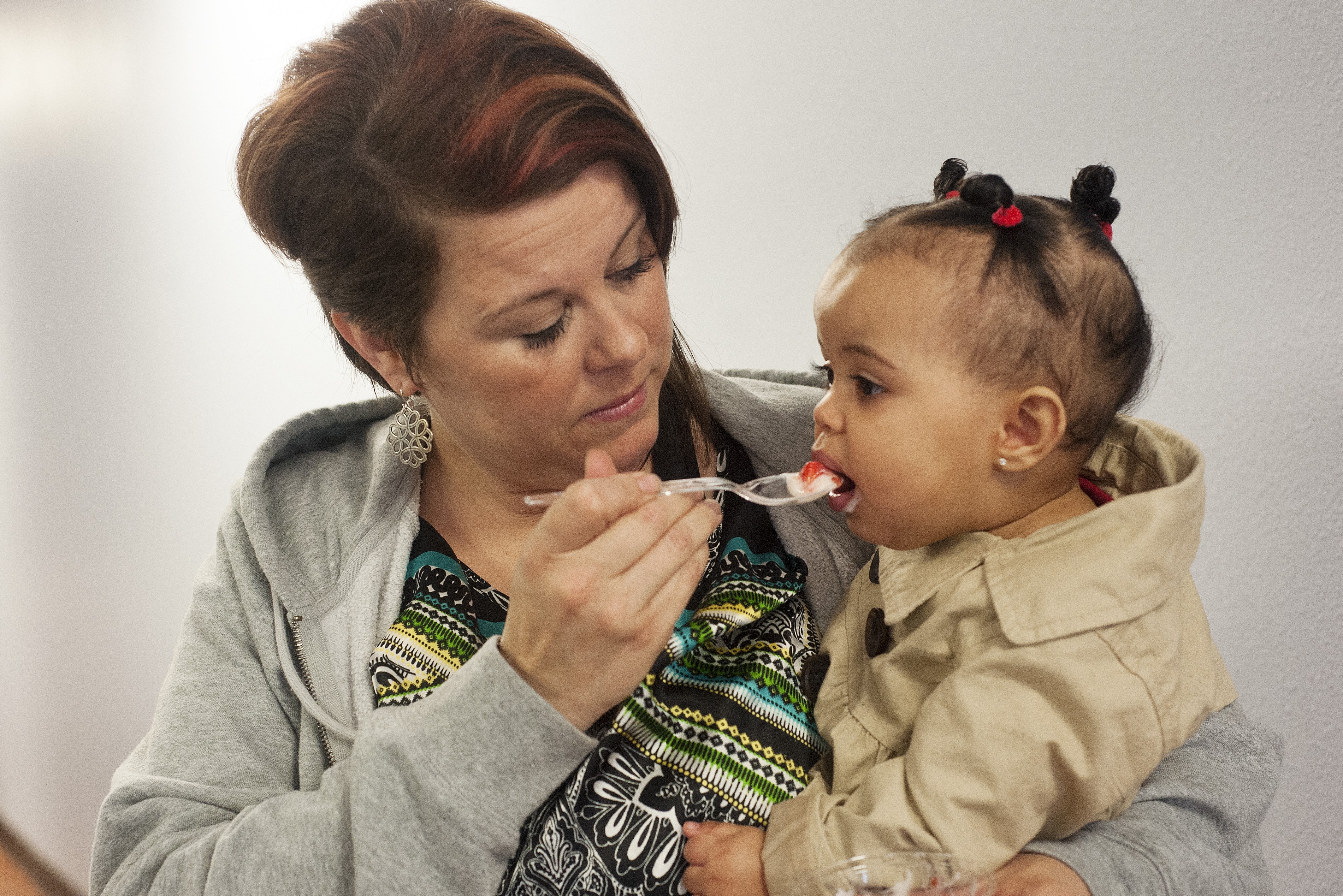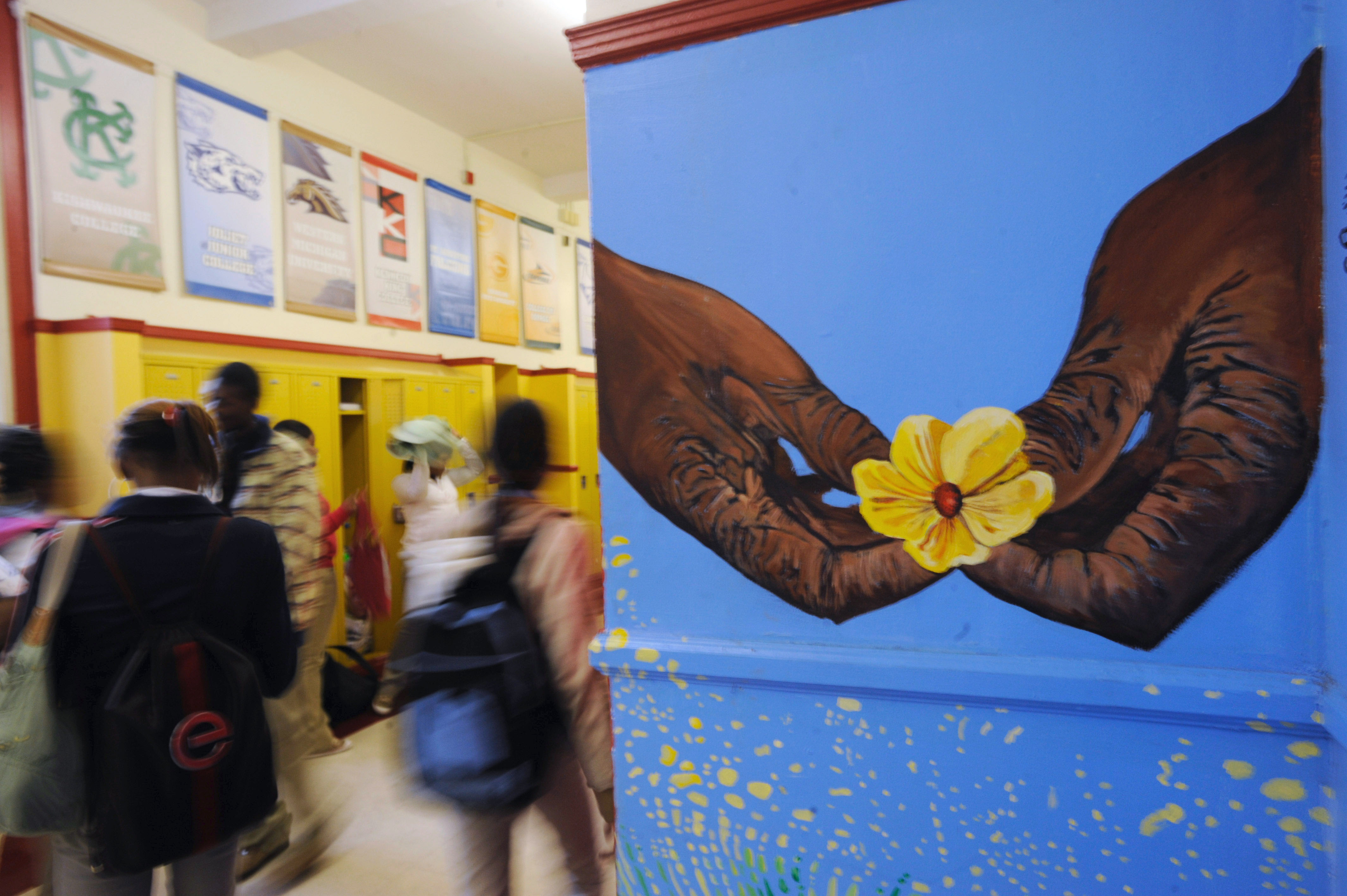
Tesha Kelley of Lindale, Texas, feeds her 10-month-old daughter during the Nutrition Carnival at the NET Health WIC (The Special Supplemental Nutrition Program for Women, Infants, and Children) Department in Tyler, Texas. (AP Photo/The Tyler Morning Telegraph, Sarah A. Miller)
Zero to Three – a leading advocate for infants and toddlers – recently released its 2015 State Baby Facts, examining how 12 million babies and toddlers in every state and DC compare with the nation in three areas critical for healthy development: good health, strong families and positive early learning experiences.
While the broad range of indicators presented reveal both opportunities and challenges for our country’s newest citizens, one startling truth leaps out: Nearly half (48 percent) of infants and toddlers live in families who are poor or near poor, while young children of color have the highest poverty rates. Black infants and toddlers have a poverty rate that is triple that of their white counterparts; Hispanic and American Indians have a rate that is more than double.
What is the takeaway? An alarming number of today’s babies – tomorrow’s workforce – are spending their early years in distressed economic circumstances, impacting their health, their families, and their opportunities for learning.
Low Birth Weight
What happens before a baby even enters the world can impact later development. Low birth weight can stem from the limited access to resources facing families in poverty, such as lack of early prenatal care and health insurance. States with higher rates tend to be those with higher poverty rates. These infants are more likely to have serious health problems and long-term disabilities, which can impair learning and affect school readiness.
The state of America’s babies is critical – it’s when we lay the foundation for our future workforce.
Nationally, about 8% of babies are born with low birth weight. In fact, babies born in the U.S. are more likely to be low birth weight than those born in almost every other developed country. States with the lowest rates cluster between 6% and 7%, and states with the highest go up to 11%. The national health goals established a target of 7.8%, which 23 states currently meet. However, this goal is much more modest than the 2010 goal of 5% – which no state and only small pockets around the country ever achieved.
The disparity between African American newborns and other racial or ethnic groups is particularly striking. African American babies are almost twice as likely as white babies to be low birth weight. This difference has puzzled scientists for decades and cannot solely be explained by access to prenatal care or socioeconomic status. Much current attention is focused on the cumulative stress African American women experience during their lifetime.
Stress at a Young Age
The young children behind the poverty stats are spending their most vulnerable years in stressful circumstances that undermine healthy child development – from food insecurity to unstable housing to parents struggling to make ends meet. By age three, almost half of the toddlers in poverty have had one or more adverse experiences, such as childhood abuse, neglect, or exposure to other traumatic stressors. Chronic stress can undermine development – emotionally and biologically – and can be toxic to the developing brain. It changes how the nervous system manages adversity and how the immune system resists infection, as well as impairs brain areas that affect attention, memory and thinking. Poverty literally gets under the skin.
The good news is that babies are resilient, even in the face of such challenges. The key is strong, nurturing relationships – they can buffer the toxic effects of chronic stress. Close relationships with trusted adults give babies security, allowing them to become confident learners.
Quality Child Care
All parents want to give their children the right start, but it’s not always easy. Three of every five mothers with an infant are working, meaning access to high-quality child care is essential to supporting family economic security and early learning. Working parents quickly learn that without paid family leave it’s too costly to stay home and care for one’s baby. Moreover, child care takes a big bite out of paychecks. For single mothers, the average cost of infant care is more than 40% of median income.
Quality child care can have a positive effect on cognitive, language, and social-emotional development, and thus school readiness. The strongest effects are found with the most at-risk children – but they are often the ones whose families can least afford it.
The reverse is also true: poor quality care can have a detrimental effect. Much of the infant-toddler care in this country is of poor to middling quality. Few states set sufficient standards that promote quality interactions for children with well-trained – and suitably compensated – providers. Simply put, child care is not just a work support, it’s an integral part of early childhood education.
The state of America’s babies is critical – it’s when we lay the foundation for our future workforce. When babies and families have the supports they need, we create innovators, thinkers, and stronger communities. Our shared vision of a prosperous future will be realized only if there is a robust quality of life for babies today.
























